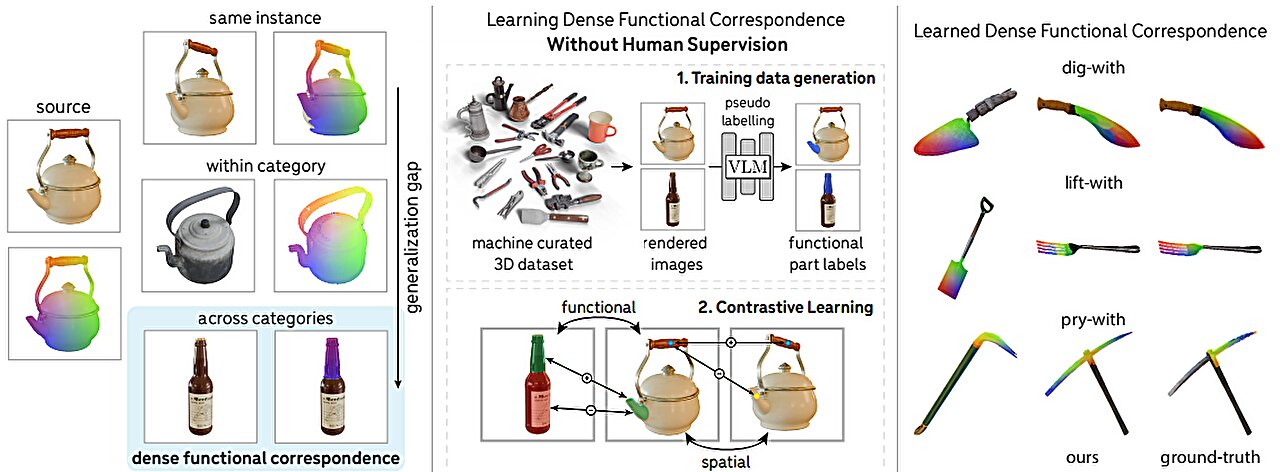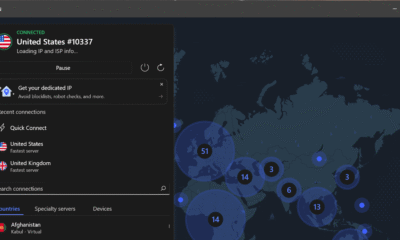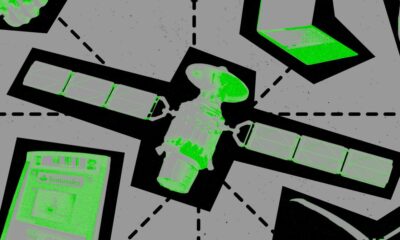Tech
Why the F5 Hack Created an ‘Imminent Threat’ for Thousands of Networks

Thousands of networks—many of them operated by the US government and Fortune 500 companies—face an “imminent threat” of being breached by a nation-state hacking group following the breach of a major maker of software, the federal government warned on Wednesday.
F5, a Seattle-based maker of networking software, disclosed the breach on Wednesday. F5 said a “sophisticated” threat group working for an undisclosed nation-state government had surreptitiously and persistently dwelled in its network over a “long term.” Security researchers who have responded to similar intrusions in the past took the language to mean the hackers were inside the F5 network for years.
Unprecedented
During that time, F5 said, the hackers took control of the network segment the company uses to create and distribute updates for BIG IP, a line of server appliances that F5 says is used by 48 of the world’s top 50 corporations. Wednesday’s disclosure went on to say the threat group downloaded proprietary BIG-IP source code information about vulnerabilities that had been privately discovered but not yet patched. The hackers also obtained configuration settings that some customers used inside their networks.
Control of the build system and access to the source code, customer configurations, and documentation of unpatched vulnerabilities has the potential to give the hackers unprecedented knowledge of weaknesses and the ability to exploit them in supply-chain attacks on thousands of networks, many of which are sensitive. The theft of customer configurations and other data further raises the risk that sensitive credentials can be abused, F5 and outside security experts said.
Customers position BIG-IP at the very edge of their networks for use as load balancers and firewalls, and for inspection and encryption of data passing into and out of networks. Given BIG-IP’s network position and its role in managing traffic for web servers, previous compromises have allowed adversaries to expand their access to other parts of an infected network.
F5 said that investigations by two outside intrusion-response firms have yet to find any evidence of supply-chain attacks. The company attached letters from firms IOActive and NCC Group attesting that analyses of source code and build pipeline uncovered no signs that a “threat actor modified or introduced any vulnerabilities into the in-scope items.” The firms also said they didn’t identify any evidence of critical vulnerabilities in the system. Investigators, which also included Mandiant and CrowdStrike, found no evidence that data from its CRM, financial, support case management, or health systems was accessed.
The company released updates for its BIG-IP, F5OS, BIG-IQ, and APM products. CVE designations and other details are here. Two days ago, F5 rotated BIG-IP signing certificates, though there was no immediate confirmation that the move is in response to the breach.
Tech
Spark plasma sintering and diffusion technology yield high-performance permanent magnets for green industries

A research team has developed an innovative manufacturing process for permanent magnets that overcomes the limitations of conventional techniques. The team’s breakthrough significantly advances the diffusion technology, which is essential for improving magnetic performance, and creates new possibilities for applying high-efficiency magnets in eco-friendly industries such as electric vehicles, wind turbines, and robotics.
The findings are published in the Journal of Alloys and Compounds.
The joint research team from the Nano Technology Research Division at DGIST was led by Dr. Donghwan Kim and Dr. Jungmin Kim.
With the rapid growth of the electric vehicle and wind power sectors, the demand for powerful permanent magnets capable of stable operation at high temperatures has soared. A major example is the neodymium (Nd-Fe-B) permanent magnet, widely used in electric vehicle motors. However, these magnets experience a decline in magnetic performance under extreme heat, requiring the addition of heavy rare-earth elements such as terbium (Tb) and dysprosium (Dy) to maintain their strength. The challenge is that these elements are both rare and expensive.
To address this issue, the grain boundary diffusion process has been widely adopted. This technique enhances magnetic performance by infiltrating a small amount of heavy rare-earth material into the magnet’s surface. However, diffusion in this process is limited to the surface layer and does not penetrate into the magnet’s interior, making it difficult to apply to thick magnets.
To overcome this limitation, the research team combined spark plasma sintering, an advanced manufacturing technique, with the grain boundary diffusion process. By pre-mixing the diffusion material during the powder-based magnet fabrication stage, uniform diffusion was achieved throughout the magnet. Consequently, the diffusion depth increased markedly compared with that achieved by existing methods, allowing for the creation of a core–shell structure in which the magnet exhibits uniform and enhanced magnetic performance.
Remarkably, even with the same amount of rare-earth material, the new process achieved higher diffusion efficiency and significantly improved overall performance. This advancement makes it possible to produce magnets that are smaller and lighter while maintaining strong magnetic strength. It is expected to contribute to the miniaturization, weight reduction, and improved energy efficiency of electric vehicle motors. Additionally, the process shows great potential for application to large-scale magnets.
Principal Researcher Dr. Donghwan Kim stated, “This study presents a method that overcomes the limitations of the conventional grain boundary diffusion technology, enabling uniform performance throughout the magnet. It will make a significant contribution to the development of high-performance permanent magnets required in eco-friendly energy industries such as electric vehicles and wind power generation.”
More information:
Seong Chan Kim et al, Homogeneous core-shell structure formation in Nd-Fe-B sintered magnets through advanced spark plasma sintering and internal grain boundary diffusion, Journal of Alloys and Compounds (2025). DOI: 10.1016/j.jallcom.2025.183635
Citation:
Spark plasma sintering and diffusion technology yield high-performance permanent magnets for green industries (2025, October 20)
retrieved 20 October 2025
from https://techxplore.com/news/2025-10-plasma-sintering-diffusion-technology-yield.html
This document is subject to copyright. Apart from any fair dealing for the purpose of private study or research, no
part may be reproduced without the written permission. The content is provided for information purposes only.
Tech
WIRED Roundup: Satellites Data Leak, Cybertrucks, Politicized Federal Workers

Zoë Schiffer: Yeah, I mean, I was talking to someone before these recent layoffs who’d worked at the CDC previously and had been pretty involved in efforts to study the impact of certain diseases or pandemics specifically on pregnant populations, and this person had told me a while ago, that entire team was gone. They didn’t have many people in place anymore who could look at particularly vulnerable populations from a health perspective, which I found pretty sad and disturbing, but now, I mean, it’s just getting so much worse. It’s getting so much worse.
Jake Lahut: And Russell Vought seems to be quite happy about each additional version of this that keeps coming down the pike, so.
Zoë Schiffer: Right. Okay. We’ll talk more about these federal layoffs and how they’ve affected other agencies too in our next segment. But before we go to break, I’ve got a fun and very tech bro scoop for you, Cybertrucks.
Jake Lahut: Yeah. Honestly, I should be paying you to be on the show today, Zoë, so tell me more about it.
Zoë Schiffer: Okay. Well, I found this story so charming because essentially our Features Director Reyhan had said, “Let’s do a photo essay of Cybertruck owners.” And I was like, ‘I volunteer as tribute. I really want to do this.” So I contacted a bunch of people, I was actually going around, and when I saw Cybertrucks, I would leave little notes on their car. Not a single person ever responded to me, I was like.
Jake Lahut: Stalker behavior.
Zoë Schiffer: “Okay, all right.” But eventually I got in contact with this guy who runs Cybertrucks Owners Only, which is this 50,000 person Facebook group that’s really, really active. And he, while very suspicious of the media, like many Cybertrucks owners was like, “I’m game. If you come to Palm Springs on this weekend, we can have a Cybertrucks meetup and you can go meet people, you can take photos and interview them.” I love reporting where your original thesis is completely disproven in the course of the reporting, and the Cybertrucks owners really see themselves as the victims of this campaign. They’re being spit at, they’re being targeted, people yell that they’re Nazis. And to a lot of people who I talk to, they don’t see their purchase of this car as at all political. They’re like, “I just like the car. It’s a cool car, it’s fun and all of these crazy liberal people are screaming at me all day. I have my kids in the car and they’re chasing after me calling me a Nazi.” The article came out today, there’s some really cool photos. I’m curious to hear what you thought.
Tech
AI model could boost robot intelligence via object recognition

Stanford researchers have developed an innovative computer vision model that recognizes the real-world functions of objects, potentially allowing autonomous robots to select and use tools more effectively.
In the field of AI known as computer vision, researchers have successfully trained models that can identify objects in two-dimensional images. It is a skill critical to a future of robots able to navigate the world autonomously. But object recognition is only a first step. AI also must understand the function of the parts of an object—to know a spout from a handle, or the blade of a bread knife from that of a butter knife.
Computer vision experts call such utility overlaps “functional correspondence.” It is one of the most difficult challenges in computer vision. But now, in a paper that will be presented at the International Conference on Computer Vision (ICCV 2025), Stanford scholars will debut a new AI model that can not only recognize various parts of an object and discern their real-world purposes but also map those at pixel-by-pixel granularity between objects.
A future robot might be able to distinguish, say, a meat cleaver from a bread knife or a trowel from a shovel and select the right tool for the job. Potentially, the researchers suggest, a robot might one day transfer the skills of using a trowel to a shovel—or of a bottle to a kettle—to complete a job with different tools.
“Our model can look at images of a glass bottle and a tea kettle and recognize the spout on each, but also it comprehends that the spout is used to pour,” explains co-first author Stefan Stojanov, a Stanford postdoctoral researcher advised by senior authors Jiajun Wu and Daniel Yamins. “We want to build a vision system that will support that kind of generalization—to analogize, to transfer a skill from one object to another to achieve the same function.”
Establishing correspondence is the art of figuring out which pixels in two images refer to the same point in the world, even if the photographs are from different angles or of different objects. This is hard enough if the image is of the same object but, as the bottle versus tea kettle example shows, the real world is rarely so cut-and-dried. Autonomous robots will need to generalize across object categories and to decide which object to use for a given task.
One day, the researchers hope, a robot in a kitchen will be able to select a tea kettle to make a cup of tea, know to pick it up by the handle, and to use the kettle to pour hot water from its spout.
Autonomy rules
True functional correspondence would make robots far more adaptable than they are currently. A household robot would not need training on every tool at its disposal but could reason by analogy to understand that while a bread knife and a butter knife may both cut, they each serve a specific purpose.
In their work, the researchers say, they have achieved “dense” functional correspondence, where earlier efforts were able to achieve only sparse correspondence to define only a few key points on each object. The challenge so far has been a paucity of data, which typically had to be amassed through human annotation.
“Unlike traditional supervised learning where you have input images and corresponding labels written by humans, it’s not feasible to humanly annotate thousands of pixels individually aligning across two different objects,” says co-first author Linan “Frank” Zhao, who recently earned his master’s in computer science at Stanford. “So, we asked AI to help.”
The team was able to achieve a solution with what is known as weak supervision—using vision-language models to generate labels to identify functional parts and using human experts only to quality-control the data pipeline. It is a far more efficient and cost-effective approach to training.
“Something that would have been very hard to learn through supervised learning a few years ago now can be done with much less human effort,” Zhao adds.
In the kettle and bottle example, for instance, each pixel in the spout of the kettle is aligned with a pixel in the mouth of the bottle, providing dense functional mapping between the two objects. The new vision system can spot function in structure across disparate objects—a valuable fusion of functional definition and spatial consistency.
Seeing the future
For now, the system has been tested only on images and not in real-world experiments with robots, but the team believes the model is a promising advance for robotics and computer vision. Dense functional correspondence is part of a larger trend in AI in which models are shifting from mere pattern recognition toward reasoning about objects. Where earlier models saw only patterns of pixels, newer systems can infer intent.
“This is a lesson in form following function,” says Yunzhi Zhang, a Stanford doctoral student in computer science. “Object parts that fulfill a specific function tend to remain consistent across objects, even if other parts vary greatly.”
Looking ahead, the researchers want to integrate their model into embodied agents and build richer datasets.
“If we can come up with a way to get more precise functional correspondences, then this should prove to be an important step forward,” Stojanov says. “Ultimately, teaching machines to see the world through the lens of function could change the trajectory of computer vision—making it less about patterns and more about utility.”
More information:
Weakly-Supervised Learning of Dense Functional Correspondences. dense-functional-correspondence.github.io/ On arXiv: DOI: 10.48550/arxiv.2509.03893
Citation:
AI model could boost robot intelligence via object recognition (2025, October 20)
retrieved 20 October 2025
from https://techxplore.com/news/2025-10-ai-boost-robot-intelligence-recognition.html
This document is subject to copyright. Apart from any fair dealing for the purpose of private study or research, no
part may be reproduced without the written permission. The content is provided for information purposes only.
-

 Tech1 week ago
Tech1 week agoAustralian airline Qantas says millions of customers’ data leaked online
-

 Tech1 week ago
Tech1 week agoUK police to upgrade illicit asset recovery system | Computer Weekly
-

 Entertainment1 week ago
Entertainment1 week agoKaty Perry and Justin Trudeau are dating: Report
-

 Tech5 days ago
Tech5 days agoWhat Is Google One, and Should You Subscribe?
-

 Entertainment1 week ago
Entertainment1 week agoVictoria Beckham thinks Brooklyn Beckham is fed up with Nicola Peltz drama?
-

 Business1 week ago
Business1 week agoEnvironment minister Bhupender Yadav heads to Brazil: India engages in pre-talks ahead of COP30; climate finance and adaptation on agenda – The Times of India
-

 Sports1 week ago
Sports1 week agoUSMNT’s second half vs. Ecuador gives positives for Pochettino
-

 Politics1 week ago
Politics1 week agoNo survivors likely after Tennessee military blast, say officials


















